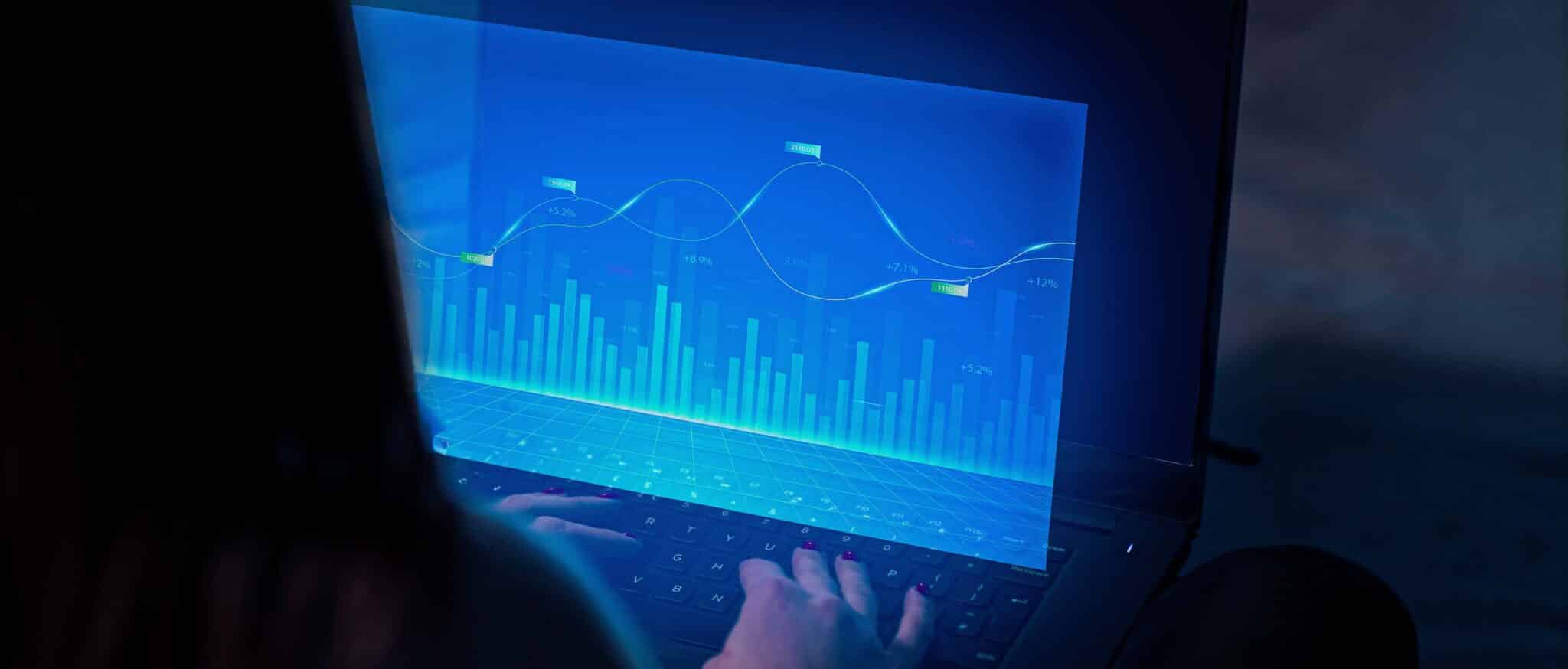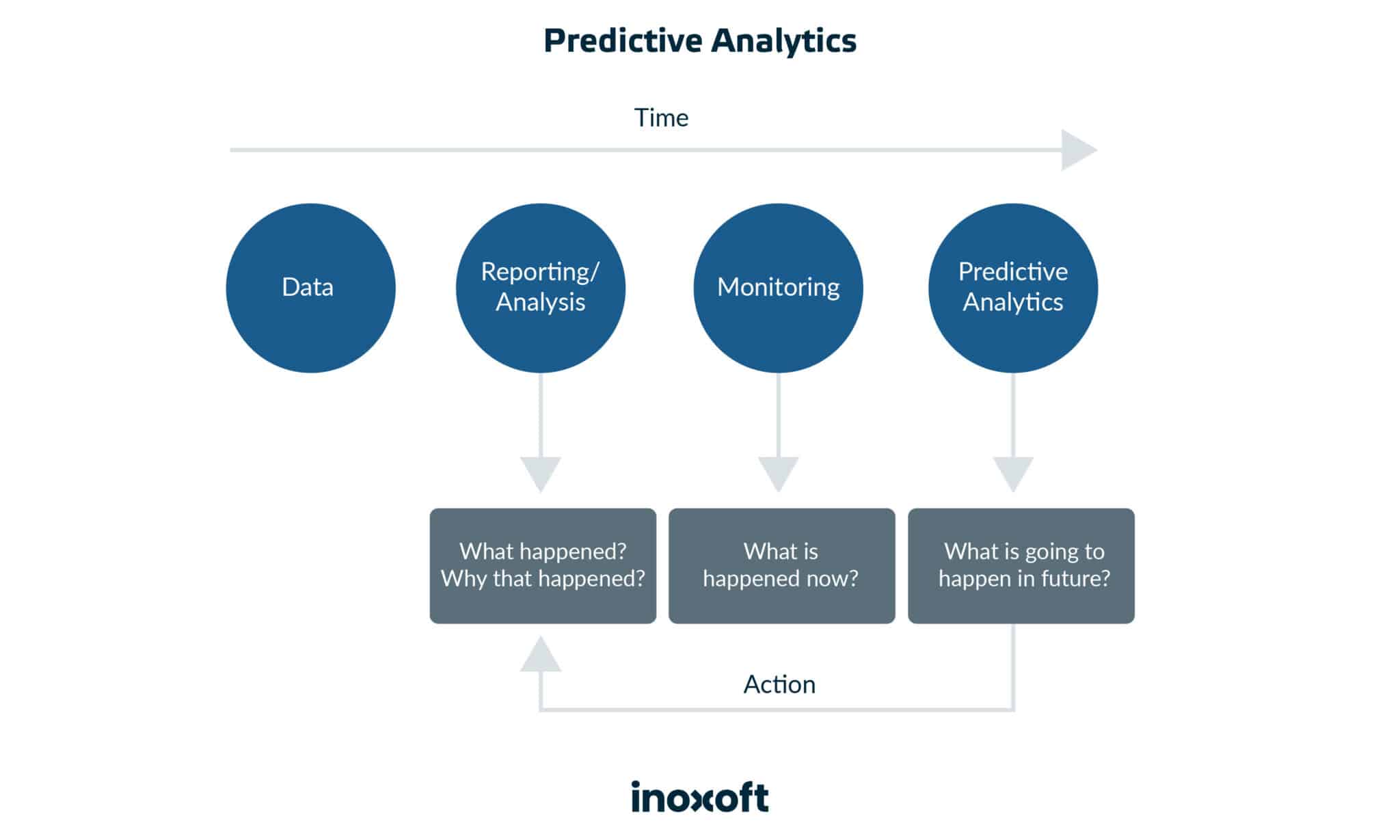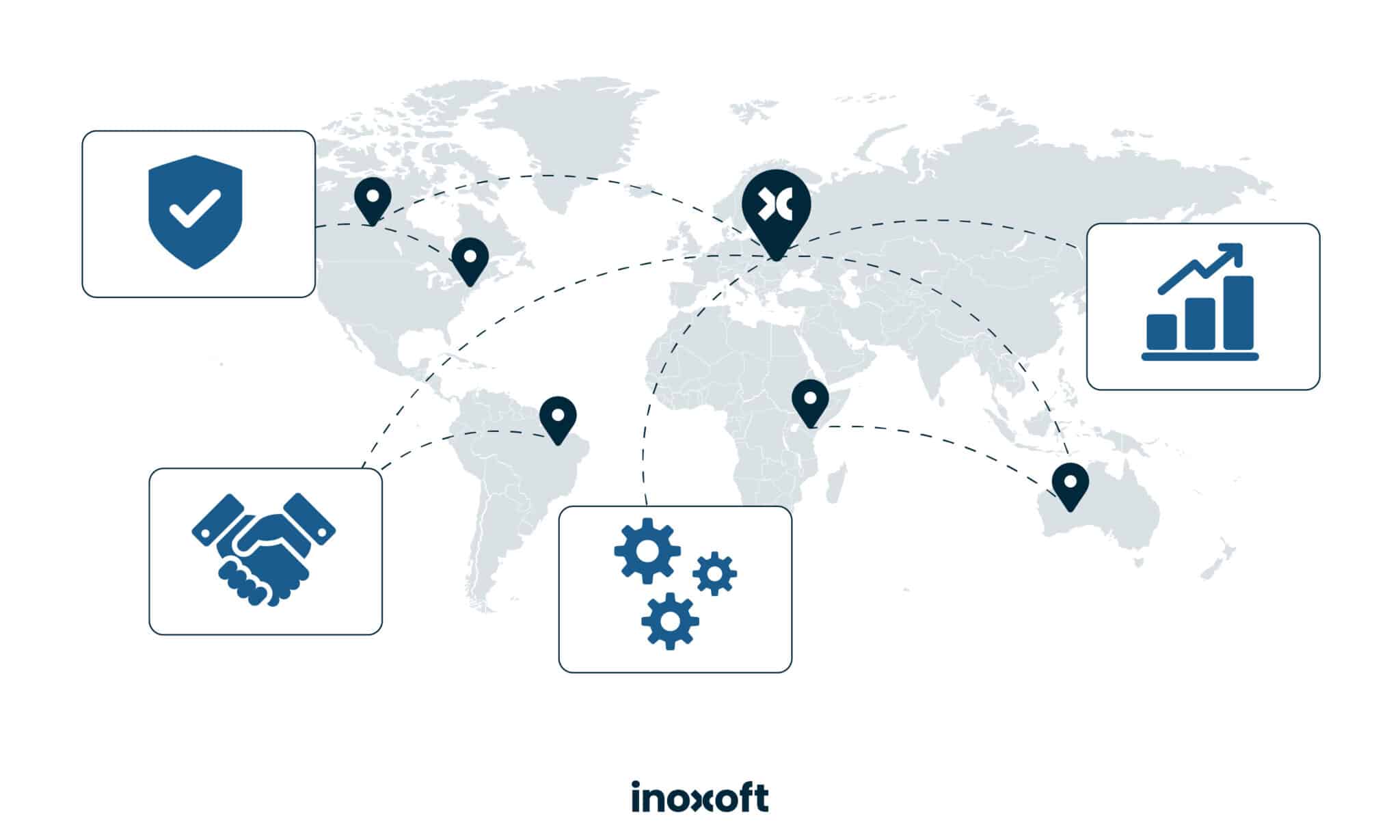With the adoption of mobile, over the past decades, e-commerce has grown at a notable level, by bringing shopping literally into consumers’ hands. Technologies impact every stage of the customer’s online shopping journey —from personalized marketing to price managing, and behavioral analytics.
One of the most influential technologies in the industry - is retail predictive analytics. Business owners are aware of the fact that providing value through a targeted campaign is no longer enough. The ability to be the first who predict trends is a new distinguishing factor.
Wonder how predictive analytics actually work? Read the article to answer this question!
- How is eCommerce Predictive Analytics Works?
- Types of Predictive Analytics
- Decision-making modeling
- Predictive modeling
- Descriptive modeling
- Big data vs Predictive analytics
- Benefits of Using Predictive Analytics for eCommerce
- Product recommendations
- Price formation
- Supply chain management
- Fraud management
- Enhanced Business Intelligence
- What are Predictive Analytics Use Cases in Retail?
- Demand forecasting
- Inventory Management
- Personalized experience
- Price Optimization
- Customer Lifetime Value Prediction
- Customer Segmentation and Targeting
- Inoxoft's Experience
- Final Thoughts
How is eCommerce Predictive Analytics Works?
Predictive analytics is statistical modeling that analyzes historical data, and with the help of different techniques, methods, and tool (data mining, data modeling, deep learning, machine learning, and AI algorithms) make predictions on the future.
Predictive analytics in the retail industry understand risks and opportunities, analyze buyers’ behavior, and assist with inventory management with the help of data patterns that are possible to predict. In simple words, predictive analytics turn past and current data into valuable future actions.
Also, eCommerce predictive analytics covers what if?’ scenarios: what if I raise the price in April by four percent? What if I add another sales promotion in May?
Read more: data analytics in manufacturing
Types of Predictive Analytics
There are three types of predictive analytics businesses can employ:
- decision-making modeling
- predictive modeling
- descriptive modeling
Decision-making modeling
Shows relations between elements in a decision. These can be the data, the decision, and the forecasted results. This relationship can forecast potential results, increase the chance of the needed outcomes and decrease the others.
Predictive modeling
Use statistical data to predict the outcomes and make sure that similar units in different samples have similar performance or vice versa. With the help of predictive modeling, you can predict customers’ behavior and detect risk.
Descriptive modeling
Classify clients to describe relationships within a dataset. So, you get product preferences accounting for age, status, gender, etc.
Big data vs Predictive analytics
Big data Analytics |
Predictive analytics |
|
| What it is? | Study and analysis of data sets that give various valuable insights to business | In the process of existing data analysis that predicts future and unknown events |
| Where it is used? | In customer data organization and management | In predicting the company’s business potential |
| What are its benefits? | Less data redundancy and confusion | To know how to run a business further and make it a positive experience |
| What does it do in real time? | Maintains and handles data sets and customer information safely | Predicts past, present, and future business events |
| What industry it applies to? | Anywhere the companies are data-based and this data has to be appropriately managed | Anywhere you can implement the predictive analytic model on business projects to ensure fast growth and dynamic actions |
Benefits of Using Predictive Analytics for eCommerce
Here are a few benefits of predictive analytics usage in eCommerce that any company can obtain.
Product recommendations
With the help of predictive customer analytics in retail, a store won’t recommend a “vegetarian frying pan for steaks”.
Before recommending any products, online stores, companies, and services check different criteria: user’s previous behavior, purchase history, the current season, and browsing history, in real-time. For instance, a smart system of recommendation is a common approach within the industry. Tech giants like Netflix fully use the power of data analytics. Their well-known recommendation AI-powered algorithm discovers customer behavior and buying patterns and then suggests movies and TV shows based on received insights.
The same strategy can be observed with Spotify, Amazon, eBay, and every streaming platform. Predictive analytics, with advanced Machine Learning capabilities, correlate data from different sources to create a personalized experience for each client.
Price formation
With predictive analytics tools, lots of companies are able to implement dynamic pricing. Advanced ML algorithms form prices based on the analysis of many factors: the season, day and time of the week, weather, holidays, current demand, etc. Based on the information a system suggests an appropriate price range for a particular service. This approach is well known to users of Uber, Airbnb, different airlines, etc.
Supply chain management
Predictive analytics helps you effectively manage the supply chain process, including planning and forecasting, sourcing, fulfillment, delivery, and returns. Some retailers have experienced up to 60% reductions in operating margins by applying analytics to supply chain management. What benefits may it bring?
- improved stock management
- greater order fulfillment
- optimized use of available warehouse space
- better use of cash flow
- no “out-of-stock ” items
Fraud management
The probability of fraud in online payment is pretty big. eCommerce predictive analytics studies customer buying patterns, payment methods, etc. The implementation of predictive models identifies potential fraud, reduces credit card payment failure, secures online retail, and increases conversions and sales.
Enhanced Business Intelligence
One of the most valuable things predictive analytics can bring to your business is the ability to understand market trends and customer expectations in real time. BI tools capture customer data, review trends, and develop models that determine what a client might like. The BI leads to better decision-making and better service overall by offering the products clients want at the price they want.
Also, predictive analytics in the eCommerce industry allows companies to:
- Increase business capabilities
- Become competitive in the market
- Make the most money on your sales
- Run targeted campaigns
- Obtain new service (product) opportunities
- Gain insights according to client’s preferences
- Reduce cost waste and risk incident
- Determine the price a customer is ready to pay for your product
- Satisfy user demand 100%
- Enhance business intelligence
- Make fast and accurate business decisions
What are Predictive Analytics Use Cases in Retail?
Let’s discover a few predictive analytics examples in retail:
Demand forecasting
Retailers use predictive analytics to forecast product demand more accurately. Technology analyzes historical sales data, seasonal patterns, economic indicators, and other relevant factors, so retailers can predict future demand for specific products.
Instead of human judgment, Nestlé used analytics for demand forecasting. As a result, the enterprise managed to make multimillion-dollar reductions in inventory and reduce its inventory safety stock by 20%. The technology they’ve implemented senses demand signals, associated with, price, advertising, sales, promotions, and economic factors, automatically notifying a company what things are actually influencing customers to buy their products.
Inventory Management
Predictive analytics assists in optimizing inventory levels by predicting when and how much stock needs to be replenished. This helps retailers minimize carrying costs and reduce the risk of stockouts or overstock situations, ultimately improving efficiency and profitability.
Zara uses predictive analytics to respond quickly to changing fashion trends. The company analyzes real-time sales data and customer feedback, Zara adjusts its production and distribution processes to minimize excess inventory and meet demand for the latest trends.
Personalized experience
Retailers use predictive analytics to provide personalized product recommendations to customers. Analyzes of past purchase behavior and preferences allow retailers to offer targeted suggestions, enhancing the customer experience and increasing the likelihood of additional sales.
Amazon uses predictive analytics to analyze customers’ browsing and purchase histories to recommend products. For instance, if a customer purchases a book, the recommendation engine might suggest related books or items frequently bought together.
Price Optimization
Retailers use predictive analytics to determine the optimal pricing strategy for products. By analyzing data on customer behavior, market trends, and competitor pricing, retailers can adjust prices dynamically to maximize revenue and profit margins.
Tesco, a UK-based supermarket chain, uses predictive analytics to adjust product prices dynamically. By analyzing competitor prices, historical sales data, and other market factors, Tesco optimizes its pricing strategy to remain competitive and maximize revenue.
Customer Lifetime Value Prediction
Predictive analytics helps retailers estimate the potential value of a customer over their entire relationship with the business. This information is valuable for tailoring marketing strategies, loyalty programs, and customer service efforts.
Sephora’s Beauty Insider program uses predictive analytics to estimate the lifetime value of a customer. By analyzing purchasing behavior, Sephora tailors personalized offers, rewards, and recommendations to enhance the customer experience and encourage loyalty.
Customer Segmentation and Targeting
Predictive analytics identify and categorize customers based on their behavior, preferences, and purchasing patterns. Retailers can then create targeted marketing campaigns and personalized promotions to enhance customer engagement and increase sales.
Starbucks uses predictive analytics through its mobile app and loyalty program. By analyzing customer purchase history, preferences, and location data, Starbucks can send personalized offers and promotions to specific customer segments, increasing customer engagement.
Learn how to build a big data business strategy!
Inoxoft’s Experience
Inoxoft leverages intelligent technologies to power the industry. We provide Big data analytics services and ML development services to help you obtain valuable insights and apply effective solutions to identify trends, markets and risks before they appear. Our team offers expertise in:
- Natural Language Processing
- Predictive Analytics
- Sales prediction
- Pricing analytics
- Marketing optimization
Our story of creating Predictive Customer Segmentation for Retail Company!
Final Thoughts
Predictive analytics in retail is becoming a crucial part of the industry. As the data analytics market grows, more and more affordable solutions and models are being developed. So, lots of startups, enterprises, and local businesses have been adopting technology to lead the market.
If you are ready to implement an idea, contact our expert to get all the details and answers to help you achieve your business goals as soon as possible.
Frequently Asked Questions
How does the retail industry utilize predictive analytics?
The retail industry extensively utilizes predictive analytics to enhance various aspects of its operations, from inventory management to customer engagement. Here are several ways in which predictive analytics is employed in the retail sector:
- Demand forecasting
- Inventory management
- Personalized experience
- Customer lifetime value prediction
- Customer segmentation and targeting
Where else is it used predictive analytics?
Predictive analytics is widely used across various industries and sectors to make informed decisions, optimize processes, and gain insights into future trends. Here are some additional areas where predictive analytics is commonly applied:
Healthcare:
Disease Prediction: Predictive analytics can identify and predict disease outbreaks, patient deterioration, and potential health risks. It helps healthcare providers in early intervention and proactive patient care.
Resource Planning: Hospitals use predictive analytics for patient flow management, predicting peak admission times, and optimizing resource allocation.
Financial Services:
Credit Scoring: Financial institutions use predictive analytics to assess credit risk and determine credit scores for loan applicants.
Fraud Detection: Predictive analytics helps in identifying and preventing fraudulent activities in financial transactions by analyzing patterns and anomalies.
Marketing and Advertising:
Customer Segmentation: Predictive analytics categorize and target specific customer segments for personalized marketing campaigns.
Ad Targeting: Advertisers use predictive analytics to optimize digital advertising by targeting audiences more likely to engage with specific ads.
Manufacturing:
Predictive Maintenance: Manufacturers use predictive analytics to forecast equipment failures and schedule maintenance before breakdowns occur.
Supply Chain Management: Predictive analytics helps optimize supply chain processes by predicting demand, managing inventory, and ensuring timely delivery of materials.
Human Resources:
Employee Retention: Predictive analytics is applied to analyze employee data and predict factors contributing to turnover, enabling companies to implement retention strategies.
Recruitment: Companies use predictive analytics to enhance the hiring process by identifying candidates who are the best fit for specific roles.
Education:
Student Performance: Predictive analytics is applied in education to identify students at risk of falling behind and implement interventions to improve academic performance.
Enrollment Management: Educational institutions use predictive analytics for enrollment forecasting and resource planning.
Energy Management:
Demand Forecasting: Predictive analytics is used to forecast energy demand, helping utility companies optimize energy production and distribution.
Equipment Maintenance: Energy companies use predictive analytics for predictive maintenance of equipment to prevent failures and optimize operational efficiency.
Transportation and Logistics:
Route Optimization: Predictive analytics helps optimize transportation routes, reducing fuel costs and improving delivery efficiency.
Demand Forecasting: Logistics companies use predictive analytics to forecast demand and optimize inventory management in the supply chain.
Sports and Entertainment:
Player Performance: Predictive analytics is used in sports to analyze player performance, predict injuries, and optimize team strategies.
Audience Engagement: Entertainment companies use predictive analytics to understand audience preferences and tailor content recommendations.










